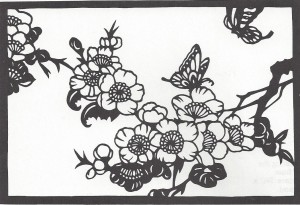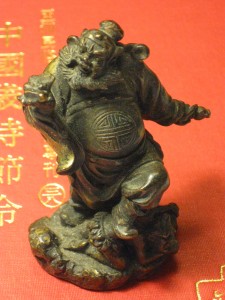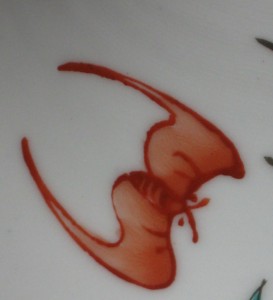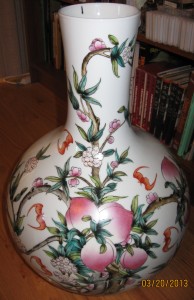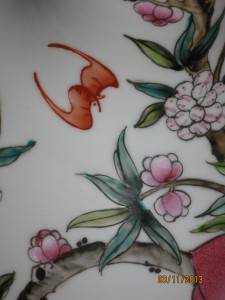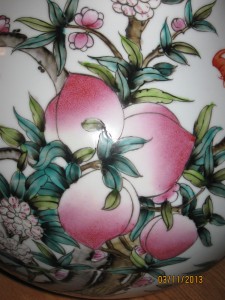Last week we introduced the butterfly as an auspicious Chinese insect, which is purely good and positive in its symbolism. Another animal, which is not an insect but is often confused with being one, is the spider. The spider (zhī zhū 蜘 蛛) in traditional China was considered to be one of the 5 poisonous animals, commonly referred to as the 5 poisons. We would immediately believe that such an animal would be considered bad and to be avoided, however, in the traditional medical theory of fighting poison with poison, the spider is considered auspicious—a good thing. People used spiders (and their images) to ward off disease.
One spider, a little red spider, is called xizi, xii zii (喜 子) and is particularly auspicious. The xi (喜) character may be written with the chong 虫 in front of the xi 喜, but apparently is often written exactly the same as the character for happiness xi (喜). Thus, its image predicts a happy event and, therefore, symbolizes joy. Plus, the spider web is a circle with a hole in the middle, which looks like an ancient Chinese coin. This spider is often portrayed as dropping from a spider web. Put all of this together and the spider dropping from the web becomes another auspicious sign representing good things dropping from the sky. 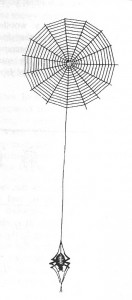
May blessings fall upon you in our New Year of 2014!
Pam
References:
Bartholomew; Eberhard (+ image); http://primaltrek.com/impliedmeaning.html#spider; http://books.google.com/books?id=QNSJSA0GUFoC&pg=PA186&lpg=PA186&dq=xizi,+spider&source=bl&ots=xc9WopnBdf&sig=be5p8mupaGyeBGZkOu5AoehaXI8&hl=en&sa=X&ei=eOy8UtKSEKaO2AWpsIGADg&ved=0CC4Q6AEwAQ#v=onepage&q=xizi%2C%20spider&f=false
